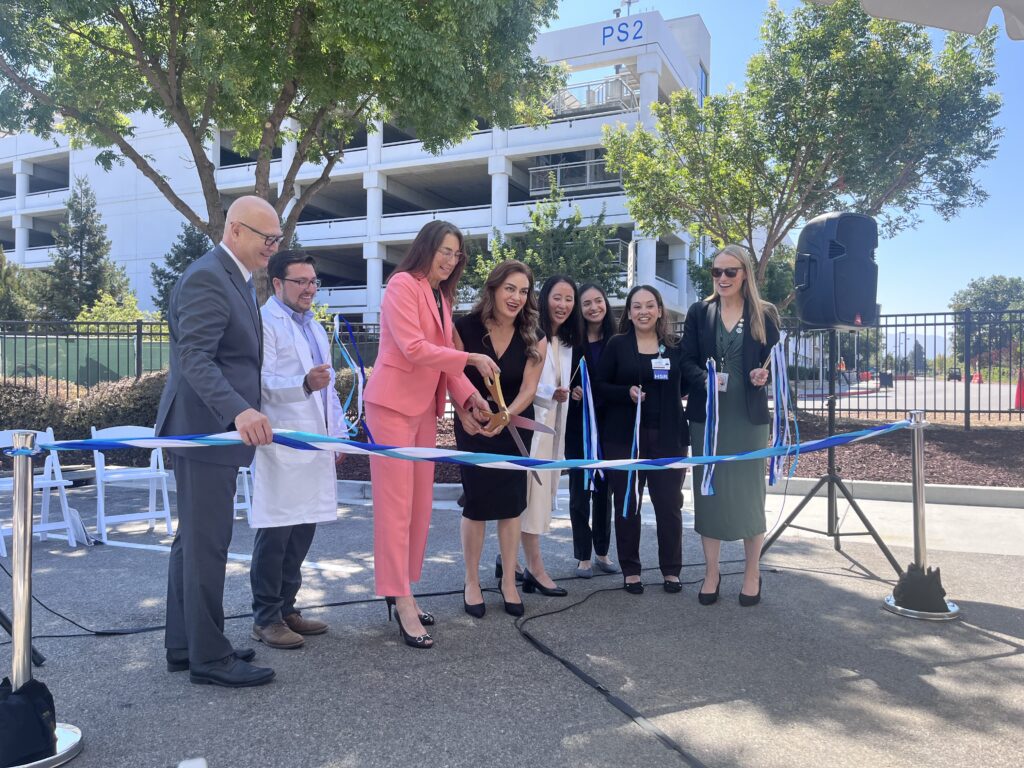While Santa Clara County is facing unprecedented revenue losses due to federal health care cuts, one newly opened clinic may survive.
Santa Clara Valley Healthcare’s Compassionate Addiction Services and Support (COMPASS) Clinic opened Sept. 2, with federal grant and opioid settlement funds contributing between $2 million to $3 million. The substance use recovery facility is the county’s only walk-in clinic available to anyone, regardless of insurance status. Clients can show up to receive services, make appointments or get health care referrals — and don’t need to be a patient of Santa Clara Valley Healthcare.
The clinic anticipates serving 30 patients a week and about 1,200 a year. It will provide medications for addiction treatment, counseling and behavioral health support, clinical triage, ongoing recovery support and referrals for additional services.
Santa Clara County Chief Operating Officer Greta Hansen said being able to receive immediate treatment is critical to recovery.
“The folks in our community who need access to treatment, most can walk through the clinic and receive treatment the day they are ready to start their recovery journey,” she said. “That is so unbelievably important given how hard it is to make that choice … allowing them to turn their lives around.”

District 4 Santa Clara County Supervisor Susan Ellenberg said ensuring same day access to treatment means no delays, no waiting lists and no excuses. Having a place where people can come with or without a referral, regardless of their insurance coverage, is critical, she told San José Spotlight.
“Every year, our county serves more than 10,000 people struggling with substance use and addiction disorders,” Ellenberg said. “Our county has set an ambitious goal to double the number of people we can serve each year by 2030, which will require innovation, collaboration, resources and bold action. The launch of the Compassionate Addiction Services and Support Clinic marks a major step toward achieving this vision.”
The clinic will work closely with primary care providers, emergency departments, inpatient services and behavioral health programs to ensure patients don’t fall through the cracks, Ellenberg said, building on the county’s 226 treatment beds that serve more than 2,164 people every year.
Since she was a teenager, Dora Baltazar struggled with addiction. She was in and out of incarceration, homeless and ultimately lost her children. But through treatment, she transformed her life and today helps others as a health representative for COMPASS Clinic.
“I understand firsthand the challenges, the stigmas and the isolation that addiction can bring,” she said at the opening. “But I also know the hope, healing and strength that recovery makes possible. If you or someone you know is struggling with addiction, I urge you to reach out for help. The path may be challenging, but it leads to a brighter future filled with possibilities.”
In January 2022, Ellenberg and District 3 Supervisor Otto Lee declared a mental illness and substance use public health crisis, prompting expanded access to care.
Ellenberg said Santa Clara County has been making progress in reducing overdose deaths. The numbers have gone down — from 353 in 2022 to 317 in 2023 and 275 last year.
“Our harm reduction program served nearly 2,500 people in 2024, a 40% increase from last year, thanks to deep partnerships with housing providers, health care teams, community organizations and the city of San Jose,” she said. “In the past year, we’ve expanded naloxone distribution by 65%, making it available in vending machines at jails, schools and libraries and increased access to fentanyl test strips.”
Other treatment facilities are in the works. Pathway Society is opening a recovery facility in San Jose with 14 recovery beds later this year or early next year. It is also expanding its residential treatment capacity to 72 beds.
The county is partnering with Our Common Ground, a treatment program for adults with substance use problems and mental health disorders, to open a 32-bed facility downtown near SAP Center this fall. A 60-bed substance disorder residential treatment facility in Gilroy is also slated to open this December. The facility was purchased through Proposition 1 funding, which voters approved in 2024.
Dr. Sarah Rudman, acting health officer and director for the Santa Clara County Public Health Department, said the county is committed to a future where no one loses a loved one to an overdose. Rudman said the county’s distribution of naloxone saved 562 lives last year. Still, 275 lives were lost.
“That is 275 too many deaths … so, the work is far from done,” Rudman said at an event commemorating Overdose Awareness Day on Aug. 28. “We aim to remember every life lost and use that remembrance as fuel to keep us going to guide our work, to shape our programs and to rekindle our determination to act. We have worked to listen to the voices of people who have lived experience, who know what it’s like to struggle with addiction … and what they need to reach that recovery.”
Contact Lorraine Gabbert at [email protected].




Leave a Reply
You must be logged in to post a comment.